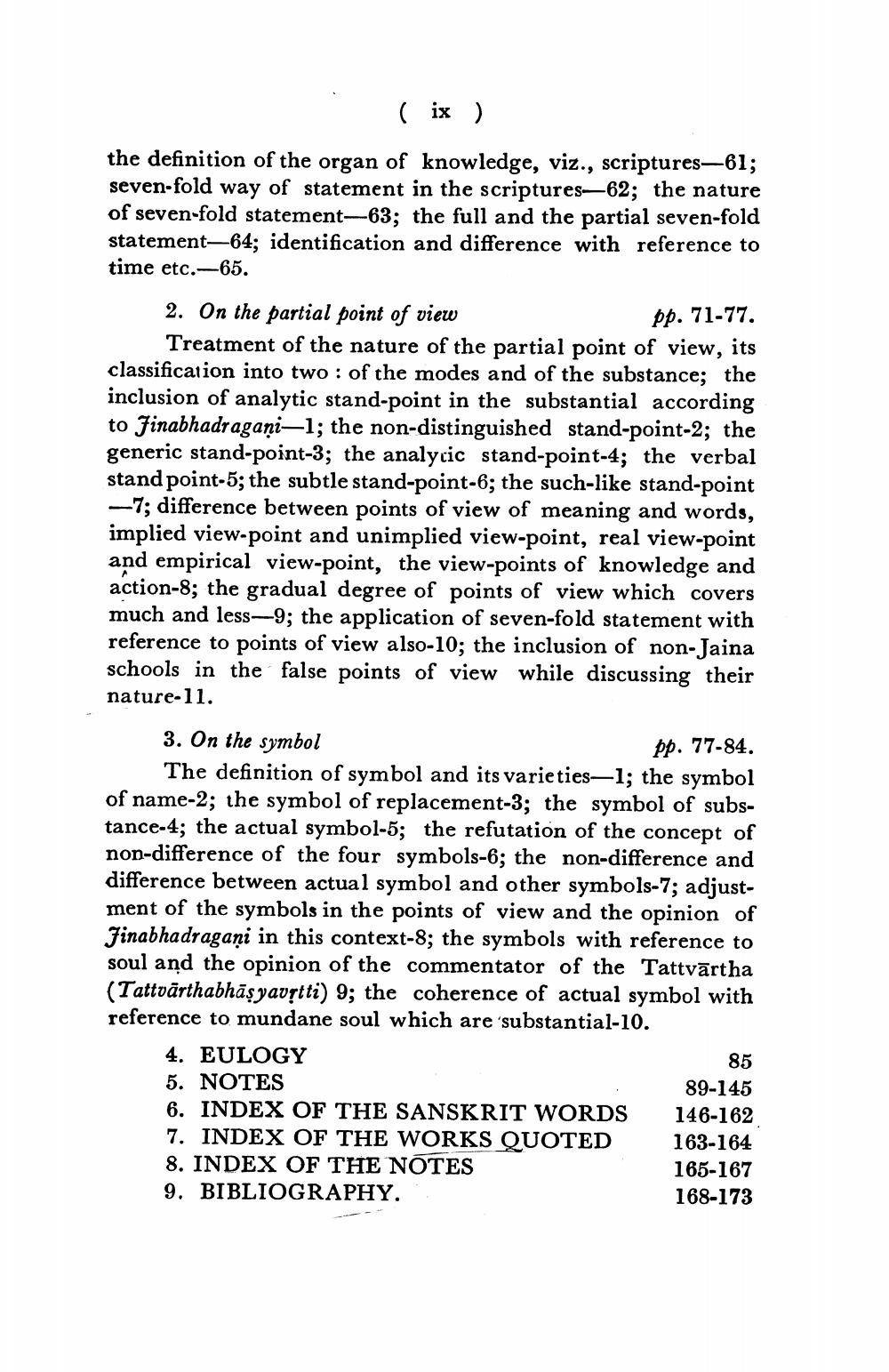________________
(
ix
)
the definition of the organ of knowledge, viz., scriptures—61; seven-fold way of statement in the scriptures—62; the nature of seven-fold statement-63; the full and the partial seven-fold statement-64; identification and difference with reference to time etc.-65.
2. On the partial point of view
pp. 71-77. Treatment of the nature of the partial point of view, its classification into two : of the modes and of the substance; the inclusion of analytic stand-point in the substantial according to Jinabhadragani-1; the non-distinguished stand-point-2; the generic stand-point-3; the analycic stand-point-4; the verbal stand point-5; the subtle stand-point-6; the such-like stand-point -7; difference between points of view of meaning and words, implied view-point and unimplied view-point, real view-point and empirical view-point, the view-points of knowledge and action-8; the gradual degree of points of view which covers much and less-9; the application of seven-fold statement with reference to points of view also-10; the inclusion of non- Jaina schools in the false points of view while discussing their nature-11.
3. On the symbol
pp. 77-84. The definition of symbol and its varieties—1; the symbol of name-2; the symbol of replacement-3; the symbol of substance-4; the actual symbol-5; the refutation of the concept of non-difference of the four symbols-6; the non-difference and difference between actual symbol and other symbols-7; adjustment of the symbols in the points of view and the opinion of Jinabhadragani in this context-8; the symbols with reference to soul and the opinion of the commentator of the Tattvārtha (Tattvārthabhās yavrtti) 9; the coherence of actual symbol with reference to mundane soul which are 'substantial-10.
4. EULOGY 5. NOTES
89-145 6. INDEX OF THE SANSKRIT WORDS 146-162 7. INDEX OF THE WORKS QUOTED 163-164 8. INDEX OF THE NOTES
165-167 9. BIBLIOGRAPHY.
168-173
85




